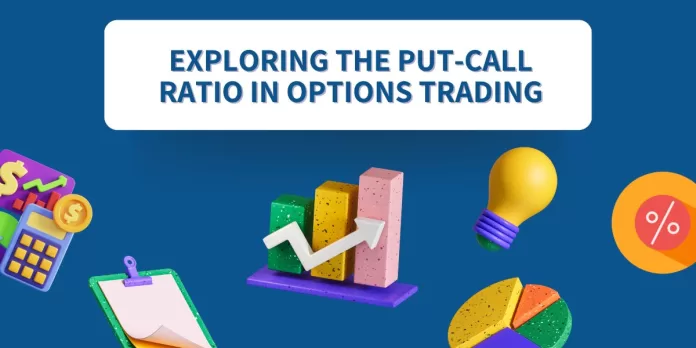Options are financial instruments with values derived from underlying assets, such as stocks, bonds, or currencies. They are commonly employed for speculative trading or risk mitigation in financial markets. However, options can also serve another purpose: predicting market direction.
Investors often use the Put-Call Ratio (PCR) as a widely adopted metric to gauge market sentiment and anticipate whether the current trend is likely to lead to a bullish or bearish market.
The Put-Call Ratio, also known as PCR, quantifies the ratio of Put options to Call options traded within a defined time frame. Its purpose is to evaluate market sentiment and forecast future price movements. A high Put-Call Ratio signifies a predominant bearish sentiment in the market, while a relatively lower Put-Call Ratio suggests a bullish outlook.
Know: What are Call and Put Options
The Put-Call Ratio can be determined using two different formulas:
- PCR = Put Volume / Call Volume:
In this formula, put volume and call volume represent the total number of put and call options traded during a specific day.
OR
- PCR = Total Put Open Interest/Total Call Open Interest
The Put-Call Ratio (PCR) is a key indicator of market sentiment that indicates:
- A PCR below 1 suggests a bullish outlook, while a value above 1 indicates a bearish sentiment.
- When PCR is close to 1, it signals a neutral sentiment.
- PCR values below 0.7 (approaching 0.5) show a strong bullish sentiment and values above 1.0 indicate a strong bearish sentiment.
When analysing the Put-Call Ratio from the perspective of option sellers, several observations can be made:
A decreasing Put-Call Ratio in a bearish market often indicates a bearish outlook, with option writers aggressively selling Call options.
On the other hand, an increase in the Put-Call Ratio during minor market dips in an uptrend can suggest a bullish outlook. This indicates Put-option writers actively entering the market during dips, expecting the uptrend to continue.
Furthermore, a decreasing Put-Call Ratio when the market approaches resistance levels may signal a bearish outlook. This reflects Call-option writers initiating new positions, anticipating limited upside potential or a market correction.
Given the diverse insights that can be derived from analysing Put-Call Ratios in various market conditions, it serves as a valuable tool for traders to make decisions regarding price movements of their chosen securities and to take directional positions accordingly.
It’s crucial to consider the demand for both Put and Call options in the market, as indicated by the numerator and denominator in the Put-Call Ratio formula. If the number of Calls traded decreases, it will lead to an increase in the Put-Call Ratio. This implies that the ratio can rise without a significant increase in the number of Put options being bought, emphasizing that a substantial influx of Put options is not necessary for the Put-Call Ratio to increase.
In conclusion, it’s important to note that the Put-Call Ratio should not be the sole metric guiding trading decisions. It is unlikely for any single ratio to accurately predict whether the market is at its peak or bottom. Instead, the PCR should be considered in conjunction with other market indicators when making buy, sell, or hold decisions. A comprehensive approach that combines multiple metrics is typically more reliable for informed decision-making in trading.


